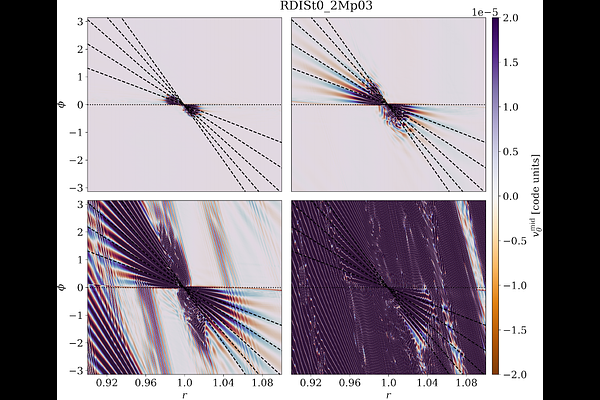Planetary waves can activate resonant drag instabilities in 3D dusty gaseous discs

Planetary waves can activate resonant drag instabilities in 3D dusty gaseous discs
Raúl O. Chametla, Yasuhiro Hasegawa, Gennaro D'Angelo
AbstractResonant Drag Instabilities (RDIs) in protoplanetary discs are driven by the aerodynamic back-reaction of dust on gas and occur when the relative dust-gas motion resonate with a wave mode intrinsic to the gas fluid. Axisymmetric models indicate that the RDI generates filamentary perturbations, leading to grain clumping and planetesimal formation. Motivated by these findings, we investigate the dust-gas interaction in a non-axisymmetric inviscid protoplanetary disc with an embedded low-mass planet ($M_{\mathrm{p}}\in[0.3, 3] M_\oplus$, here $M_\oplus$ is the Earth mass). We conduct global 3D high-resolution two-fluid simulations, with the dust being parametrized by the Stokes number $\mathrm{St}\in[0.01,0.5]$. We find that planetary waves (PWs; also known as Rossby waves), which propagate along the downstream separatrices of the horseshoe region, resonate with the streaming motion and trigger the RDI. The consequent development of a global-scale filamentary dust distribution does not sensitively depend on the Stokes number, nor does it depend on the fast dust settling that takes place in an inviscid disc. The rapid onset of this instability, which is comparable to the dynamical orbital time-scale, suppresses the formation of asymmetric structures in the dust in the vicinity of the planet (such as dust voids and filaments). Additionally, we find that the dust feedback enables buoyancy resonances in an otherwise non-buoyant (globally isothermal) disc. Therefore, our results provide the first numerical evidence of RDIs generation driven by planetary waves.